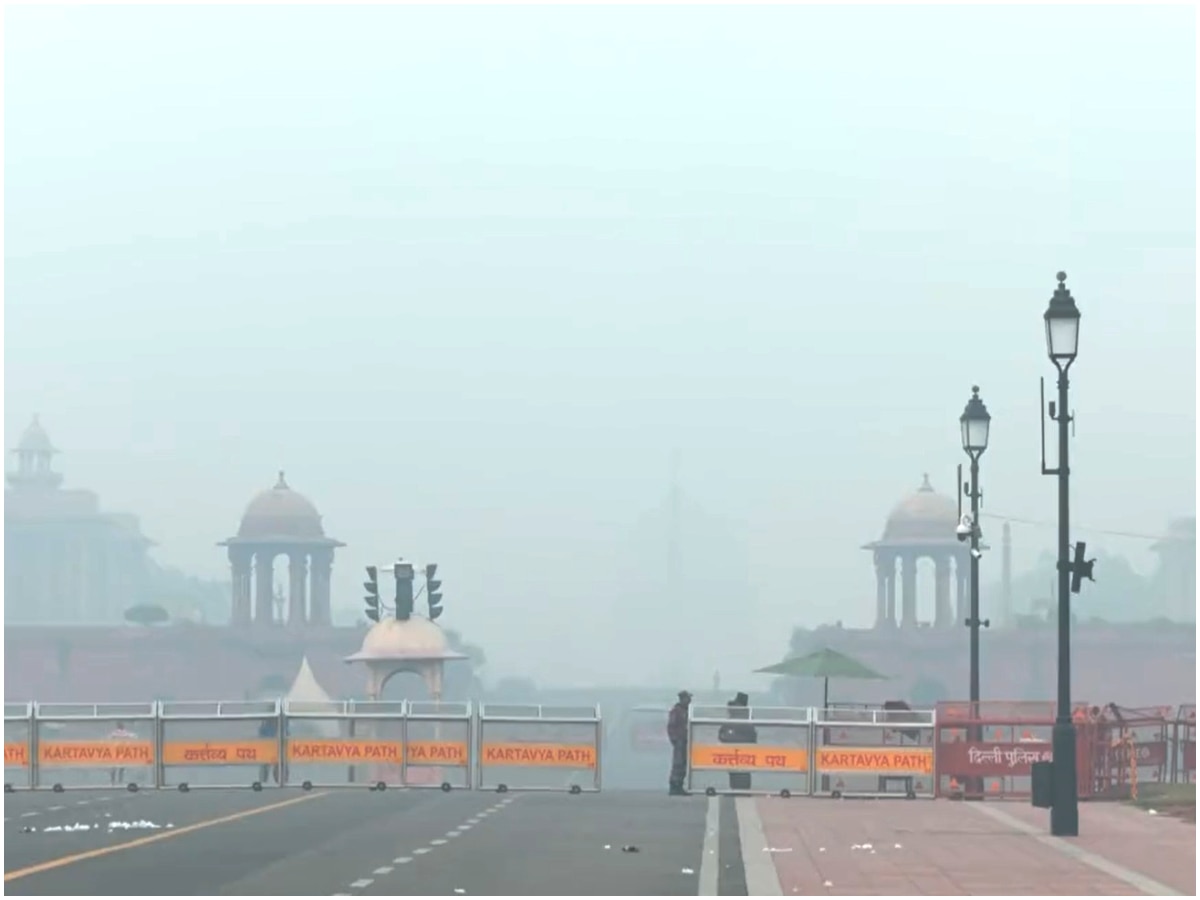Delhi-NCR Air Pollution: Visuals showed thick haze covering Delhi roads, making it difficult to see beyond a few hundred metres.
New Delhi: Just two days after the relief brought by rains, a dense smog re-engulfed the national capital and the NCR region on Monday morning. This resurgence followed people’s fireworks display on Diwali night, disregarding the Supreme Court’s ban order. Visuals shared by the news agency ANI depict a thick haze blanketing every part of the city, severely reducing visibility to just a few hundred meters. The Supreme Court’s ban on the use of barium and certain chemicals in firecrackers applies not only to the NCR but to the entire country.
Delhi Air Pollution: Best Air
The national capital witnessed the best air quality on the morning of Diwali day in eight years. People woke up to clear skies, and the city’s Air Quality Index (AQI) stood at 202 at 7am, the best in at least three weeks.
Delhi Air Pollution: People Flout Firecracker Ban
Even after ban on firecrackers, people burst crackers resulting in a hazy morning on Monday. The AQI has also touched alarming numbers this morning.
The Delhi government has implemented a complete ban on firecrackers. In response to the pollution crisis, the government even entertained the concept of ‘artificial rain’ to address the city’s polluted air until a sudden downpour provided significant relief, reducing the pollution levels.
Delhi Air Pollution: AQI In Different Areas
By 5:30 am on Monday, Delhi’s air quality index stood at 514, surpassing the 320 mark on the air quality index—classified as “hazardous” by the Swiss group IQAir. As per IQAir’s assessment, Delhi holds the unenviable position of being the most polluted city in the world on Monday.
Anand Vihar reported the highest level of air pollution, with the AQI reaching 969 (hazardous) at 5am, according to aqicn.org.
As per the Central Pollution Control Board (CPCB), Anand Vihar recorded an average AQI of 289 at 5 am, although the PM2.5 levels surged to touch the 500-mark. Similarly, at 5 am, RK Puram registered an AQI of 281, with PM2.5 being the primary pollutant reaching the 500-mark. The PM2.5 concentration in the city has been measured at 20 times the limit recommended by the World Health Organization. This prompted the city government to mandate the closure of all primary classes and restrict truck entry.
Noida, Gurugram Air Pollution
As per CPCB data, the AQI in Noida clocked at 269 (poor) at sector-62. But PM2.5 levels touched 500-mark.
In Gurugram the overall AQI was 329 (very poor), while PM2.5 levels were nearly 500.
Delhi Air Pollution: CPCB Forecast
Notably, in 2023, between November 2 and November 9, the national capital lived through its longest and most severe stretch of air pollution, with the AQI above 390 for a record eight consecutive days.
For the six days after November 14, AQI is expected to remain in the ‘severe’ to ‘very poor’ category.
Delhi Air Pollution: Health Advisory
Amid the surging air pollution levels, the Delhi health department has released an advisory to address the impact of this environmental concern. The advisory underscores the importance of taking essential measures to safeguard public health, focusing on vulnerable groups such as pregnant women, individuals with underlying medical conditions, children, and the elderly.
Delhi Air Pollution: GRAP 4 Regulations
To curb pollution and ensure adherence to anti-pollution measures, police are inspecting trucks carrying non-essential goods at different borders including the Ghazipur and the Tikri borders, as part of the GRAP 4 regulations.
Under Delhi’s air pollution control strategy (GRAP Stage IV), only CNG, electric, and BS VI-compliant vehicles from other states are permitted to enter the city, excluding those involved in essential services.
Delhi Air Pollution: Artificial Rain
The Delhi government is gearing up for a round of artificial rain in the city on November 20-21 to alleviate the suffering of residents grappling with a sharp decline in air quality over the past week.
Delhi Air Pollution: Reason Behind Deteriorating Air Quality
The air quality in Delhi-NCR deteriorated in the past week due to dropping temperatures, stagnant winds limiting pollution dispersion, and an increase in post-harvest paddy stubble burning in Punjab and Haryana.
Delhi Air Pollution: Weather Condition, Stubble Burning Primary Reasons
Adverse meteorological conditions, along with emissions from firecrackers, stubble burning, and local sources of pollution, combine to push the air quality in Delhi-NCR to hazardous levels during the winter season. According to the news agency ANI, there have been over 2,500 reported cases of stubble burning this year.

